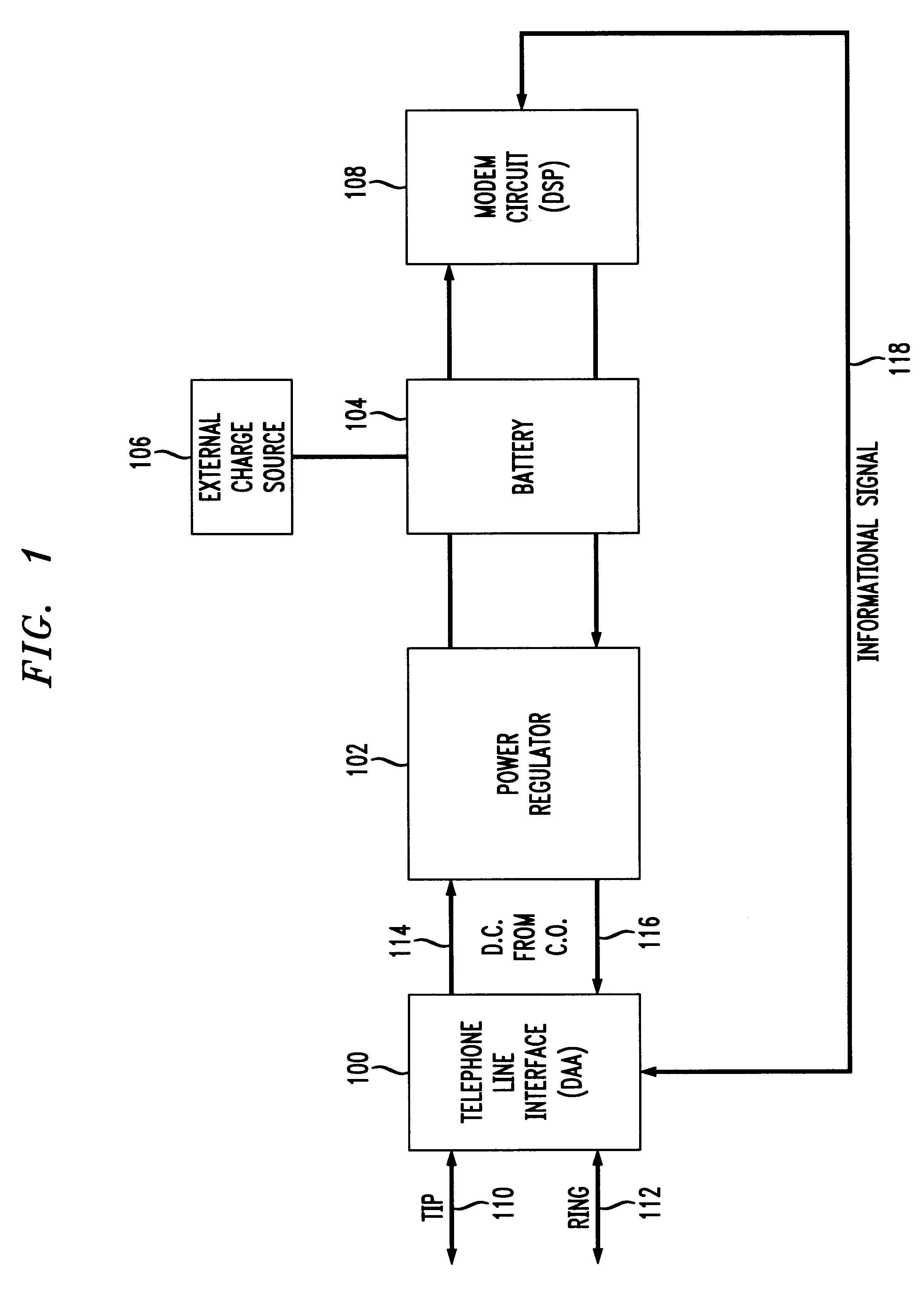Supplemental power for battery operated modems
a battery-operated modem and supplemental power technology, which is applied in the direction of data switching details, data switching current supply, duplex signal operation, etc., can solve the problems of limited ability of a modem to derive power from the telephone line, large use of power, and limited maximum current available from the telephone lin
- Summary
- Abstract
- Description
- Claims
- Application Information
AI Technical Summary
Benefits of technology
Problems solved by technology
Method used
Image
Examples
Embodiment Construction
FIG. 1 is a block diagram of a battery powered modem according to the present invention.
A standard two-wire telephone line 110, 112 from a central telephone office is connected to a standard telephone line connector such as an RJ-11 or other common telephone connector (not shown) on the portable computer device. The signal from the telephone line 110, 112 includes both an ac signal component and a dc power component and is input to the tip and ring inputs of a telephone line interface 100 of the modem.
The telephone line interface 100 in the exemplary embodiment is a data access arrangement (DAA) available from LUCENT TECHNOLOGIES. The DAA 100 includes transformers which provide isolation and balance while minimizing signal distortion within communications networks. The DAA 100 provides a barrier preventing electrical contact between the modem and the central telephone equipment. Located close to the phone jack, the transformers in the DAA 100 function as an isolation barrier that wi...
PUM
 Login to View More
Login to View More Abstract
Description
Claims
Application Information
 Login to View More
Login to View More - R&D
- Intellectual Property
- Life Sciences
- Materials
- Tech Scout
- Unparalleled Data Quality
- Higher Quality Content
- 60% Fewer Hallucinations
Browse by: Latest US Patents, China's latest patents, Technical Efficacy Thesaurus, Application Domain, Technology Topic, Popular Technical Reports.
© 2025 PatSnap. All rights reserved.Legal|Privacy policy|Modern Slavery Act Transparency Statement|Sitemap|About US| Contact US: help@patsnap.com



